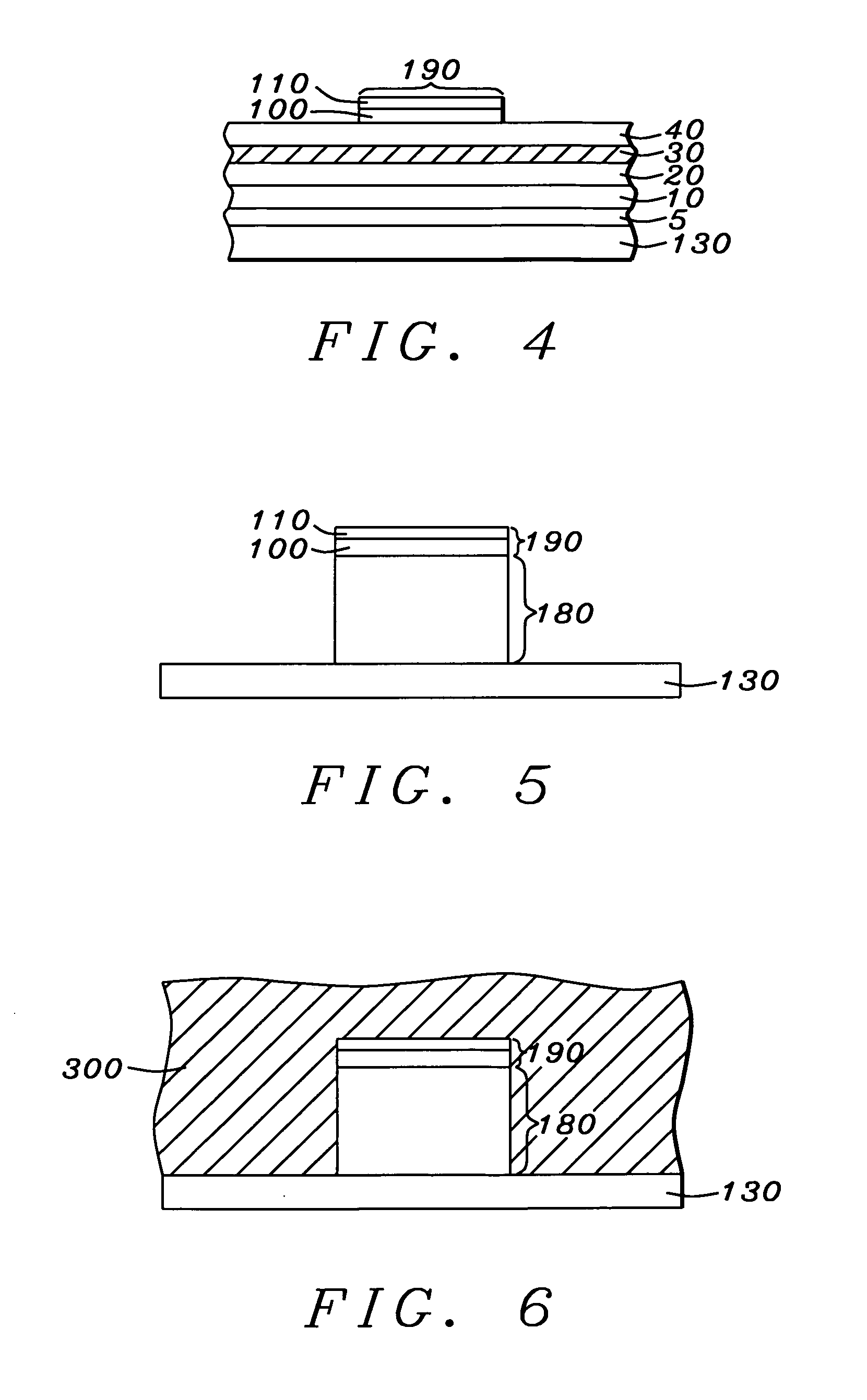Magnetic tunnel junction patterning using Ta/TaN as hard mask
- Summary
- Abstract
- Description
- Claims
- Application Information
AI Technical Summary
Benefits of technology
Problems solved by technology
Method used
Image
Examples
Embodiment Construction
[0029] The preferred embodiment of the present invention is the formation and use of a bilayer Ta / TaN hard mask, that is used to pattern an MTJ stack using a reactive ion etch (RIE) and to produce, thereby, an MTJ cell suitable for use in an MRAM array. The patterned cell so produced is capped by the Ta / TaN mask, providing a TaN upper surface that has good adhesion to the surrounding dielectric layers and further providing a non-oxidized and low resistance Ta layer immediately adjacent to and contacting the upper surface of the MTJ cell.
[0030] Referring to FIG. 3, there is shown an MTJ stack of the type shown in FIG. 1 (all layers and designating numerals being identical to those described in FIG. 1) on which is being formed a Ta / TaN bilayer (100), (110), to be patterned and used as the mask of the present invention. The lower layer (100) is a layer of Ta deposited on the upper ferromagnetic free layer (40) of the stack by any of the prior art deposition methods including PVD, CVD,...
PUM
 Login to View More
Login to View More Abstract
Description
Claims
Application Information
 Login to View More
Login to View More - R&D
- Intellectual Property
- Life Sciences
- Materials
- Tech Scout
- Unparalleled Data Quality
- Higher Quality Content
- 60% Fewer Hallucinations
Browse by: Latest US Patents, China's latest patents, Technical Efficacy Thesaurus, Application Domain, Technology Topic, Popular Technical Reports.
© 2025 PatSnap. All rights reserved.Legal|Privacy policy|Modern Slavery Act Transparency Statement|Sitemap|About US| Contact US: help@patsnap.com



